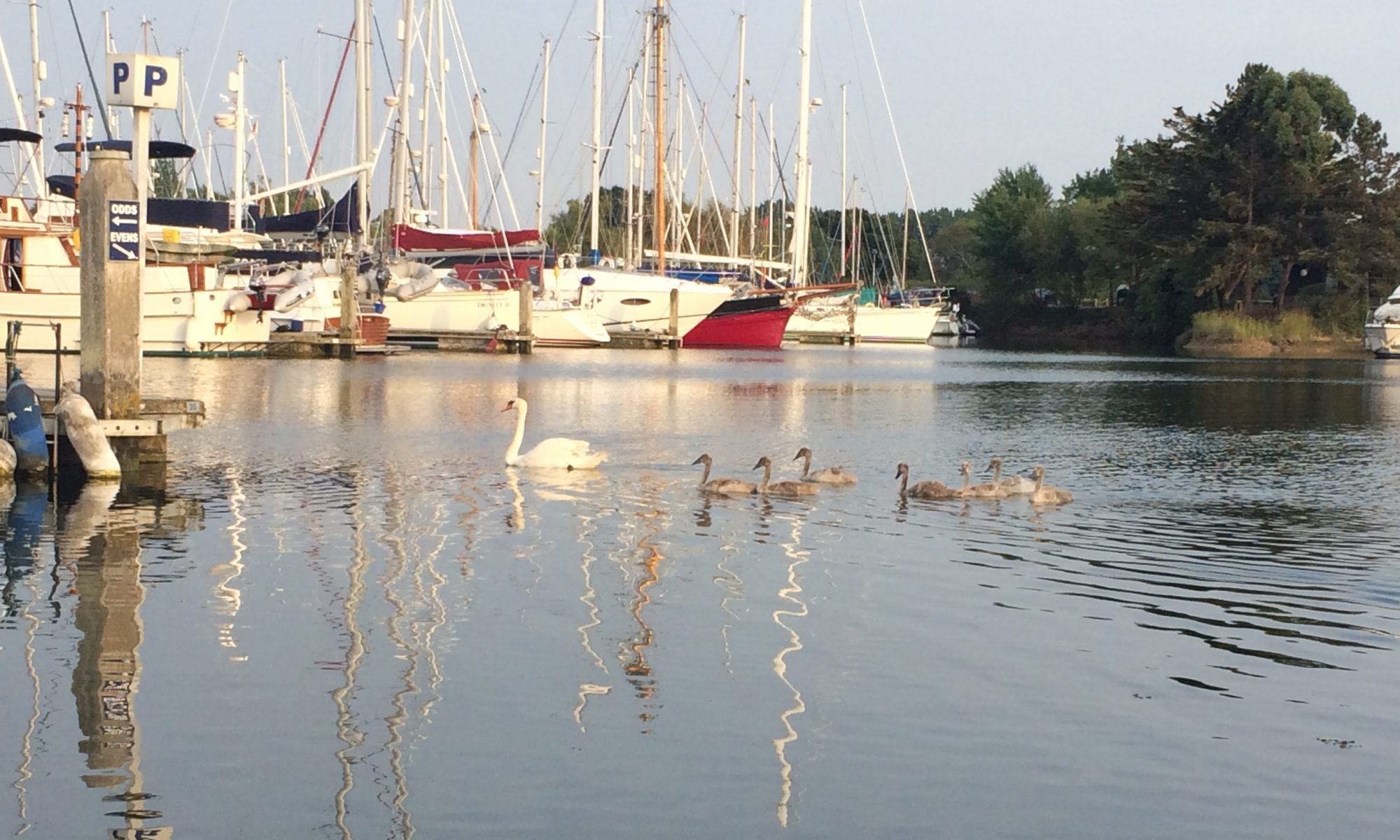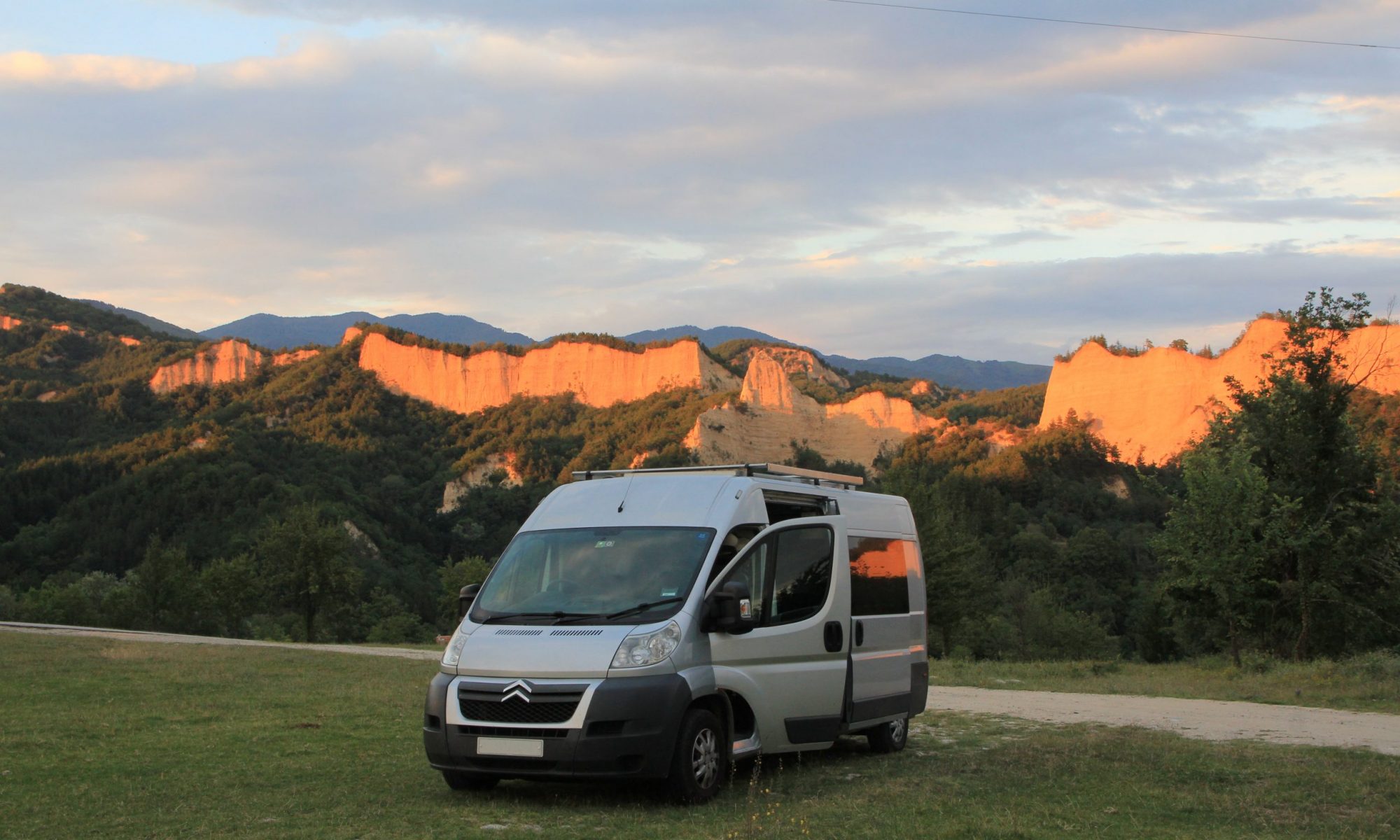Choosing a Vehicle for a self build camper van. An introduction
The very first stage of my project was to decide on a suitable vehicle for my self build motorhome.
My car averaged 47 mpg , however I soon realised I had to accept a reduction in fuel economy. Furthermore, many older vans achieved nowhere near this figure. My research showed that fuel economy of vans has continued to improve considerably in recent years. Consequently, I limited my search to a maximum of 10 years old.
I was lucky and had recently been offered a caravan. Whilst structurally a write off, it had a high quality interior. Luckily, this included many of the components I needed including an oven, cushions, oak faced doors, etc.
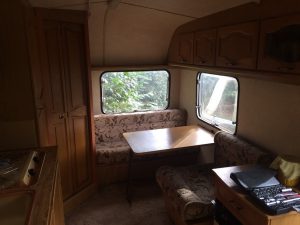
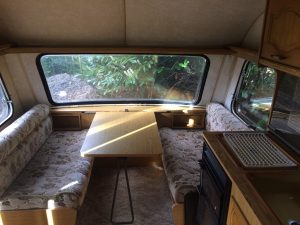
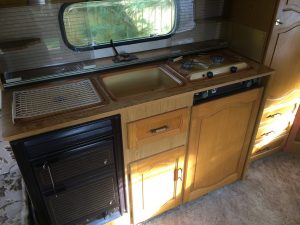
I originally trained as a Design and Technology teacher. During this role, I always emphasised to my students one important point. The importance of ensuring their designs met their design brief as well as learning through research. With this in mind, I sat and wrote the following design brief.
Design Brief
“Design and build a self-contained, environmentally responsible motor home capable of carrying a minimum of 2 adults with a minimum fuel economy of 30mpg. The motorhome must meet the requirements of the DVLA conversion criteria and have the ability to be used as an everyday vehicle”
Next Steps and early research:
I now had a design brief. Consequently, I spent the next few weeks researching existing motor homes. In addition, I began to form a list of features that I would like to include in my designs. To help, I also took a number of photographs and measurements of the interior of the old caravan to see which parts I would be able to use. Finally I drew up an early specification for my motor home
Initial Specification:
-
Off-grid capability for a minimum of 2 weeks.
-
Sustainable power generation and storage.
-
Cabin Heating.
-
Transverse bed to maximise cabin space.
-
Large rear storage area.
-
Built-in kitchen to include oven, hob and sink.
-
Air conditioning
-
30mpg minimum economy.
Further Research
Before I could do any further designing of the layout and interior of my motor home, I needed to source a base vehicle to convert. Consequently, I set about choosing a specific model.
As per my brief, the vehicle was to be used as my everyday transport. Consequently, it needed to fit the requirements of local council parking restrictions as well as my driving licence. I telephoned a number of local councils to determine the maximum permissible size of vehicle for a standard parking bay without having to pay an additional fee. The 5 councils that I contacted all stated that 6 metres was their standard length. Unfortunately, beyond this an additional fee was required.
Thinking ahead to future leisure use of my motorhome, I decided to call a number of ferry operators. As expected, I discovered that motorhomes were placed in a different category to a car. I therefore chose to leave this consideration out of my specification. Instead, I accepted that I would have to pay extra for this type of travel.
I also checked with the DVLA and confirmed that my UK standard license limited me to 3.5 tonnes. Finally, in order for the DVLA to recognise my conversion, it must have a bed of maximum length of 1800mm. In addition, In order for the motor home to meet the requirements of my own design brief, this bed had to be mounted transversely. Through my existing knowledge of materials, I knew that I wanted to line the van with 9mm ply. This would give a solid base structure onto which the lightweight interior could be fitted. Therefore I calculated an absolute minimum of 1818mm interior width. To allow for an applied finish I increased this specification point to 1830mm.
Base Van Specification
-
Maximum length 6000mm
-
Minimum internal width 1830mm
-
Minimum internal height 1900mm
-
Maximum weight 3500Kg
-
Air conditioning
-
Silver paintwork.
-
Minimum 30mpg economy.
I applied my revised van specification and found that it narrowed my search considerably. Firstly, all XLWB vans were discounted as they exceeded the length of 6000mm. Secondly, all low roof vans were discounted as they had less than 1900mm internal height. Finally, the Ford Transit, Renault Traffic, Toyota Hi-ace and the ever popular van converter’s choice of the Mercedes Sprinter all fell short of the minimum width requirement of 1830mm. Indeed, the only currently available vehicles meeting all of the requirements were the LWB medium and high roof versions of the Citroen Relay, Fiat Ducato and Peugeot Boxer.
My research showed that the Relay, Ducato and Boxer were a joint venture between Citroen, Fiat and Peugeot. Consequently, they were all essentially the same vehicle. Having already discounted the low roof versions, I arranged viewings of a mid and high roof version. After these viewings, I decided that the mid roof would be adequate for my self build motorhome. As a result, I had now further refined my vehicle hunting to the following:
Revised Van specification:
-
Citroen Relay / Fiat Ducato / Peugeot Boxer: L3H2 35 (Long wheel base, medium roof 3.5t)
-
2.2 litre Diesel
-
6 Speed manual
-
Air conditioning
-
Silver paint.
My chosen van.
I test drove a number of vans before finally settling on the one purchased. The van was only 4.5 years old and met all of my requirements including the silver paint that I was determined to have. Unfortunately, the Citroen Relay had been in daily use and therefore needed a deep clean. However, I was happy that it had been mechanically well maintained and so made an offer which was accepted.
The photograph below was taken around two weeks after purchase. Note the high level camera fitted almost immediately to assist me with reverse parking!
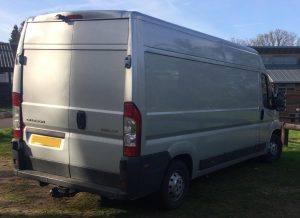
Now I had a van, it was time to get started on the build!
Click here to move on to Part 1: Motorhome Floor
Part 1: Motorhome Floor
To keep up-to-date with my progress, please subscribe to my mailing list!
Copyright. © 2020 Van and boat. All rights reserved.
